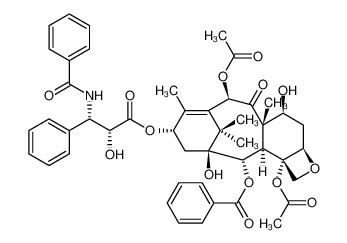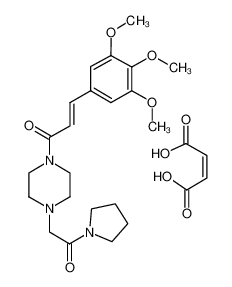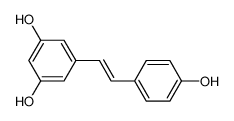1.Identification
1.1 GHS Product identifier
| Product name | 1-nitrooxypropan-2-yl nitrate |
|---|
1.2 Other means of identification
| Product number | - |
|---|---|
| Other names | 1,2-dinitrooxy-propane |
1.3 Recommended use of the chemical and restrictions on use
| Identified uses | For industry use only. |
|---|---|
| Uses advised against | no data available |
1.4 Supplier's details
| Company | MOLBASE (Shanghai) Biotechnology Co., Ltd. |
|---|---|
| Address | Floor 4 & 5, Building 12, No. 1001 North Qinzhou Road, Xuhui District, Shanghai, China |
| Telephone | +86(21)64956998 |
| Fax | +86(21)54365166 |
1.5 Emergency phone number
| Emergency phone number | +86-400-6021-666 |
|---|---|
| Service hours | Monday to Friday, 9am-5pm (Standard time zone: UTC/GMT +8 hours). |
2.Hazard identification
2.1 Classification of the substance or mixture
no data available
2.2 GHS label elements, including precautionary statements
| Pictogram(s) | no data available |
|---|---|
| Signal word | no data available |
| Hazard statement(s) | no data available |
| Precautionary statement(s) | |
| Prevention | no data available |
| Response | no data available |
| Storage | no data available |
| Disposal | no data available |
2.3 Other hazards which do not result in classification
no data available
3.Composition/information on ingredients
3.1 Substances
| Chemical name | Common names and synonyms | CAS number | EC number | Concentration |
|---|---|---|---|---|
| 1-nitrooxypropan-2-yl nitrate | 1-nitrooxypropan-2-yl nitrate | 6423-43-4 | none | 100% |
4.First-aid measures
4.1 Description of necessary first-aid measures
General advice
Consult a physician. Show this safety data sheet to the doctor in attendance.
If inhaled
Fresh air, rest. Artificial respiration may be needed. Refer for medical attention.
In case of skin contact
Remove contaminated clothes. Rinse skin with plenty of water or shower. Refer for medical attention .
In case of eye contact
First rinse with plenty of water for several minutes (remove contact lenses if easily possible), then refer for medical attention.
If swallowed
Rinse mouth. Refer for medical attention .
4.2 Most important symptoms/effects, acute and delayed
Exposure Routes: inhalation, skin absorption, ingestion, skin and/or eye contact Symptoms: Irritation eyes; conjunctivitis; methemoglobinemia; headache, impaired balance, visual disturbance Target Organs: Eyes, central nervous system, blood, liver, kidneys (NIOSH, 2016)
4.3 Indication of immediate medical attention and special treatment needed, if necessary
Maintain an open airway and assist ventilation if necessary. administer supplemental oxygen. Treat hypotension with supine positioning, crystalloid intravenous fluids, and low-dose pressors if needed. Monitor vital signs and ECG for 4-6 hours. Symptomatic methemoglobinemia may be treated with methylene blue. Administer activated charcoal if available. /Nitrates and Nitrites/
5.Fire-fighting measures
5.1 Extinguishing media
Suitable extinguishing media
/To Fight fire use/ powder, water spray, foam, carbon dioxide.
5.2 Specific hazards arising from the chemical
no data available
5.3 Special protective actions for fire-fighters
Wear self-contained breathing apparatus for firefighting if necessary.
6.Accidental release measures
6.1 Personal precautions, protective equipment and emergency procedures
Use personal protective equipment. Avoid dust formation. Avoid breathing vapours, mist or gas. Ensure adequate ventilation. Evacuate personnel to safe areas. Avoid breathing dust. For personal protection see section 8.
6.2 Environmental precautions
Evacuate danger area! Consult an expert! Personal protection: complete protective clothing including self-contained breathing apparatus. Remove all ignition sources. Collect leaking and spilled liquid in sealable containers as far as possible. Absorb remaining liquid in sand or inert absorbent. Then store and dispose of according to local regulations.
6.3 Methods and materials for containment and cleaning up
Evacuate danger area! Consult an expert! Remove all ignition sources. Collect leaking liquid in sealable containers. Absorb remaining liquid in sand or inert absorbent and remove to safe place. (Extra personal protection: complete protective clothing including self-contained breathing apparatus.)
7.Handling and storage
7.1 Precautions for safe handling
Avoid contact with skin and eyes. Avoid formation of dust and aerosols. Avoid exposure - obtain special instructions before use.Provide appropriate exhaust ventilation at places where dust is formed. For precautions see section 2.2.
7.2 Conditions for safe storage, including any incompatibilities
Fireproof.
8.Exposure controls/personal protection
8.1 Control parameters
Occupational Exposure limit values
Recommended Exposure Limit: 10 Hr Time-Weighted Avg: 0.05 ppm (0.3 mg/cu m). Skin designation.
Biological limit values
no data available
8.2 Appropriate engineering controls
Handle in accordance with good industrial hygiene and safety practice. Wash hands before breaks and at the end of workday.
8.3 Individual protection measures, such as personal protective equipment (PPE)
Eye/face protection
Safety glasses with side-shields conforming to EN166. Use equipment for eye protection tested and approved under appropriate government standards such as NIOSH (US) or EN 166(EU).
Skin protection
Wear impervious clothing. The type of protective equipment must be selected according to the concentration and amount of the dangerous substance at the specific workplace. Handle with gloves. Gloves must be inspected prior to use. Use proper glove removal technique(without touching glove's outer surface) to avoid skin contact with this product. Dispose of contaminated gloves after use in accordance with applicable laws and good laboratory practices. Wash and dry hands. The selected protective gloves have to satisfy the specifications of EU Directive 89/686/EEC and the standard EN 374 derived from it.
Respiratory protection
Wear dust mask when handling large quantities.
Thermal hazards
no data available
9.Physical and chemical properties
| Physical state | Propylene glycol dinitrate is a colorless liquid with a disagreeable odor. Mp: -30°C. Density 1.37 g/cm3 at 20°C. Slightly soluble in water (7.97 g/L H2O at 24.85°C). |
|---|---|
| Colour | Red-orange liquid |
| Odour | no data available |
| Melting point/ freezing point | -7.78°C (NIOSH, 2016) |
| Boiling point or initial boiling point and boiling range | 206.7oC at 760 mmHg |
| Flammability | Combustible LiquidGives off irritating or toxic fumes (or gases) in a fire. |
| Lower and upper explosion limit / flammability limit | no data available |
| Flash point | 98.5oC |
| Auto-ignition temperature | no data available |
| Decomposition temperature | 121°C |
| pH | no data available |
| Kinematic viscosity | no data available |
| Solubility | 0.1 % (NIOSH, 2016) |
| Partition coefficient n-octanol/water (log value) | log Kow = 1.59 /Estimated/ |
| Vapour pressure | 0.07 mm Hg at 22.22°C (NIOSH, 2016) |
| Density and/or relative density | 1.423g/cm3 |
| Relative vapour density | (air = 1): 5.73 |
| Particle characteristics | no data available |
10.Stability and reactivity
10.1 Reactivity
no data available
10.2 Chemical stability
It is unstable under ordinary conditions, but it is stabilized by small additions of 2-nitrodiphenylamine and di-n-butyl sebacate... .
10.3 Possibility of hazardous reactions
PROPYLENE GLYCOL DINITRATE is explosive. Acts as a strong oxidizing agent. Heating may cause a violent combustion or explosion producing toxic fumes (nitrogen oxides). May also decompose explosively from shock, friction or from a build-up of electrostatic charge that sparks suddenly to ground. Can begin a vigorous reaction that culminates in an explosion if mixed with reducing agents including hydrides, sulfides, and nitrides and numerous ordinary combustible materials. Reacts violently with Al, BP, cyanides, esters, PN2H, P, NaCN, SnCl2, sodium hypophosphite, and thiocyanates. Reacts with acids and with alkalis, including ammonia and amines. Must be stored in a cool, ventilated place, away from acute fire hazards and easily oxidized materials.
10.4 Conditions to avoid
no data available
10.5 Incompatible materials
Ammonia compounds, amines, oxidizers, reducing agents, combustible materials ... Similar to ethylene glycol dinitrate in explosion potential.
10.6 Hazardous decomposition products
When heated to decomposition it emits toxic fumes of /nitrogen oxide/
11.Toxicological information
Acute toxicity
- Oral: LD50 Rat oral 250 mg/kg
- Inhalation: no data available
- Dermal: no data available
Skin corrosion/irritation
no data available
Serious eye damage/irritation
no data available
Respiratory or skin sensitization
no data available
Germ cell mutagenicity
no data available
Carcinogenicity
no data available
Reproductive toxicity
no data available
STOT-single exposure
no data available
STOT-repeated exposure
no data available
Aspiration hazard
no data available
12.Ecological information
12.1 Toxicity
- Toxicity to fish: no data available
- Toxicity to daphnia and other aquatic invertebrates: no data available
- Toxicity to algae: no data available
- Toxicity to microorganisms: no data available
12.2 Persistence and degradability
Using Otto fuel II (76% 1,2-propanediol dinitrate, 22.5% dibutyl sebacate, and 1.5% 2-nitrodiphenylamine) as substrate, 1,2-propanediol dinitrate was shown to be poorly biodegraded using an activated sewage sludge, a pure culture of Pseudomonas aeruginosa, and a commercially available inoculum employed for the degradation of nitrogen containing wastes(1).
12.3 Bioaccumulative potential
An estimated BCF of 3 was calculated for 1,2-propanediol dinitrate(SRC), using an estimated log Kow of 1.6(1) and a regression-derived equation(2). According to a classification scheme(3), this BCF suggests the potential for bioconcentration in aquatic organisms is low(SRC).
12.4 Mobility in soil
Using a structure estimation method based on molecular connectivity indices(1), the Koc for 1,2-propanediol dinitrate can be estimated to be 68(SRC). According to a classification scheme(2), this estimated Koc value suggests that 1,2-Propanediol dinitrate is expected to have high mobility in soil(SRC).
12.5 Other adverse effects
no data available
13.Disposal considerations
13.1 Disposal methods
Product
The material can be disposed of by removal to a licensed chemical destruction plant or by controlled incineration with flue gas scrubbing. Do not contaminate water, foodstuffs, feed or seed by storage or disposal. Do not discharge to sewer systems.
Contaminated packaging
Containers can be triply rinsed (or equivalent) and offered for recycling or reconditioning. Alternatively, the packaging can be punctured to make it unusable for other purposes and then be disposed of in a sanitary landfill. Controlled incineration with flue gas scrubbing is possible for combustible packaging materials.
14.Transport information
14.1 UN Number
| ADR/RID: no data available | IMDG: no data available | IATA: no data available |
14.2 UN Proper Shipping Name
| ADR/RID: no data available |
| IMDG: no data available |
| IATA: no data available |
14.3 Transport hazard class(es)
| ADR/RID: no data available | IMDG: no data available | IATA: no data available |
14.4 Packing group, if applicable
| ADR/RID: no data available | IMDG: no data available | IATA: no data available |
14.5 Environmental hazards
| ADR/RID: no | IMDG: no | IATA: no |
14.6 Special precautions for user
no data available
14.7 Transport in bulk according to Annex II of MARPOL 73/78 and the IBC Code
no data available
15.Regulatory information
15.1 Safety, health and environmental regulations specific for the product in question
| Chemical name | Common names and synonyms | CAS number | EC number |
|---|---|---|---|
| 1-nitrooxypropan-2-yl nitrate | 1-nitrooxypropan-2-yl nitrate | 6423-43-4 | none |
| European Inventory of Existing Commercial Chemical Substances (EINECS) | Listed. | ||
| EC Inventory | Listed. | ||
| United States Toxic Substances Control Act (TSCA) Inventory | Listed. | ||
| China Catalog of Hazardous chemicals 2015 | Not Listed. | ||
| New Zealand Inventory of Chemicals (NZIoC) | Listed. | ||
| Philippines Inventory of Chemicals and Chemical Substances (PICCS) | Not Listed. | ||
| Vietnam National Chemical Inventory | Not Listed. | ||
| Chinese Chemical Inventory of Existing Chemical Substances (China IECSC) | Not Listed. | ||
16.Other information
Information on revision
| Creation Date | Aug 19, 2017 |
|---|---|
| Revision Date | Aug 19, 2017 |
Abbreviations and acronyms
- CAS: Chemical Abstracts Service
- ADR: European Agreement concerning the International Carriage of Dangerous Goods by Road
- RID: Regulation concerning the International Carriage of Dangerous Goods by Rail
- IMDG: International Maritime Dangerous Goods
- IATA: International Air Transportation Association
- TWA: Time Weighted Average
- STEL: Short term exposure limit
- LC50: Lethal Concentration 50%
- LD50: Lethal Dose 50%
- EC50: Effective Concentration 50%
References
- IPCS - The International Chemical Safety Cards (ICSC), website: http://www.ilo.org/dyn/icsc/showcard.home
- HSDB - Hazardous Substances Data Bank, website: https://toxnet.nlm.nih.gov/newtoxnet/hsdb.htm
- IARC - International Agency for Research on Cancer, website: http://www.iarc.fr/
- eChemPortal - The Global Portal to Information on Chemical Substances by OECD, website: http://www.echemportal.org/echemportal/index?pageID=0&request_locale=en
- CAMEO Chemicals, website: http://cameochemicals.noaa.gov/search/simple
- ChemIDplus, website: http://chem.sis.nlm.nih.gov/chemidplus/chemidlite.jsp
- ERG - Emergency Response Guidebook by U.S. Department of Transportation, website: http://www.phmsa.dot.gov/hazmat/library/erg
- Germany GESTIS-database on hazard substance, website: http://www.dguv.de/ifa/gestis/gestis-stoffdatenbank/index-2.jsp
- ECHA - European Chemicals Agency, website: https://echa.europa.eu/
















-
-

-
-
-

-
-
-

-
-
-

-
-
-

-
-
-

-
-
-

-
-
-

-
-
-

-
More Suppliers>>Hangzhou J&H Chemical Co., Ltd.
CHINA
Purity: ≥98%
Lead Time: 7 Day(s)
Price: -
Hangzhou DayangChem Co., Ltd
CHINA
Purity: 98%
Lead Time: 7 Day(s)
Price: -
Shenzhen Regent Biochemistry Technology CO., Ltd.
CHINA
Purity: 96%
Lead Time: 7 Day(s)
Price: -
Ibookbio
WALES
Purity: 96%
Lead Time: 7 Day(s)
Price: -
Chemos GmbH
GERMANY
Purity: 96%
Lead Time: 7 Day(s)
Price: -
SPEC-INF-BB
UKRAINE
Purity: 95%
Lead Time: 7 Day(s)
Price: -
AccuStandard Inc
UNITED STATES
Purity: 95%
Lead Time: 7 Day(s)
Price: -
Cerilliant Corporation
UNITED STATES
Purity: 95%
Lead Time: 7 Day(s)
Price: -
Spectrum Info Ltd.
UKRAINE
Purity: 98%
Lead Time: 14 Day(s)
Price: -